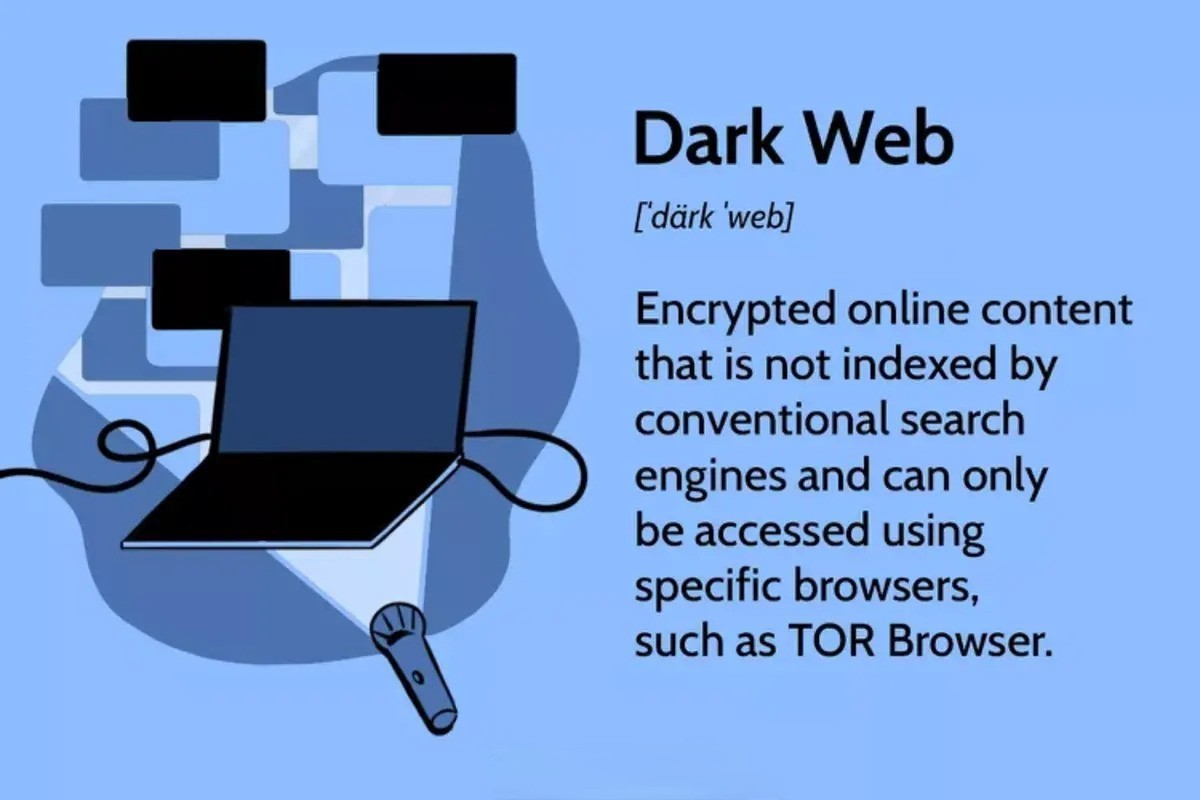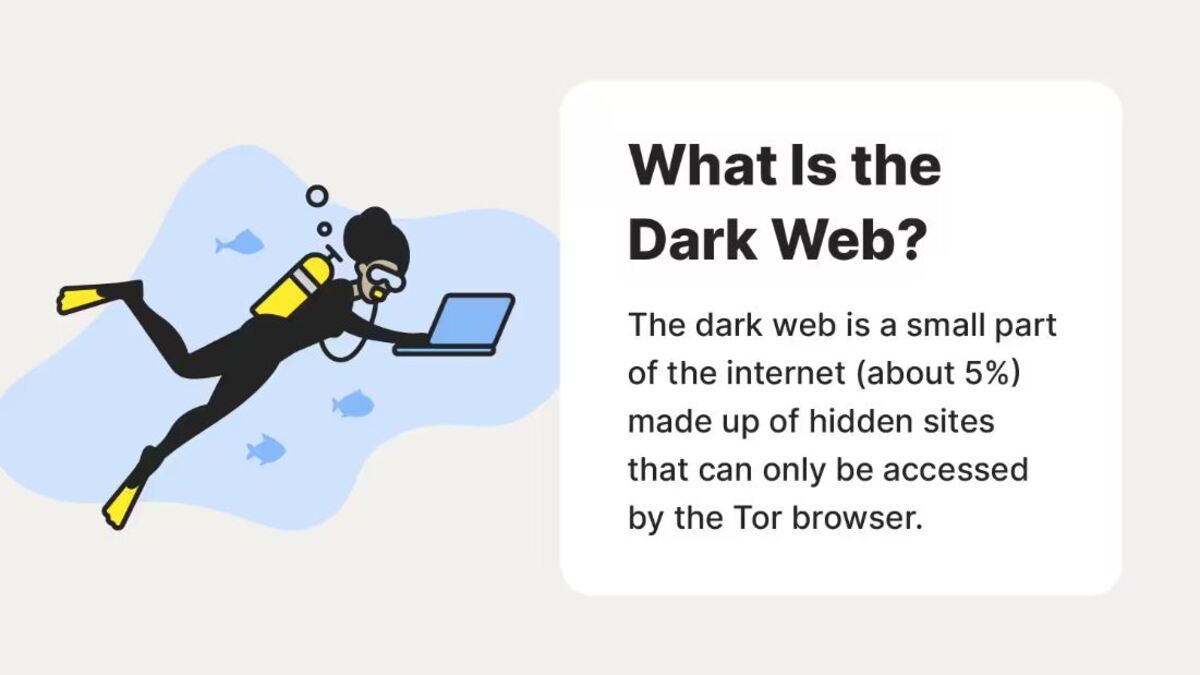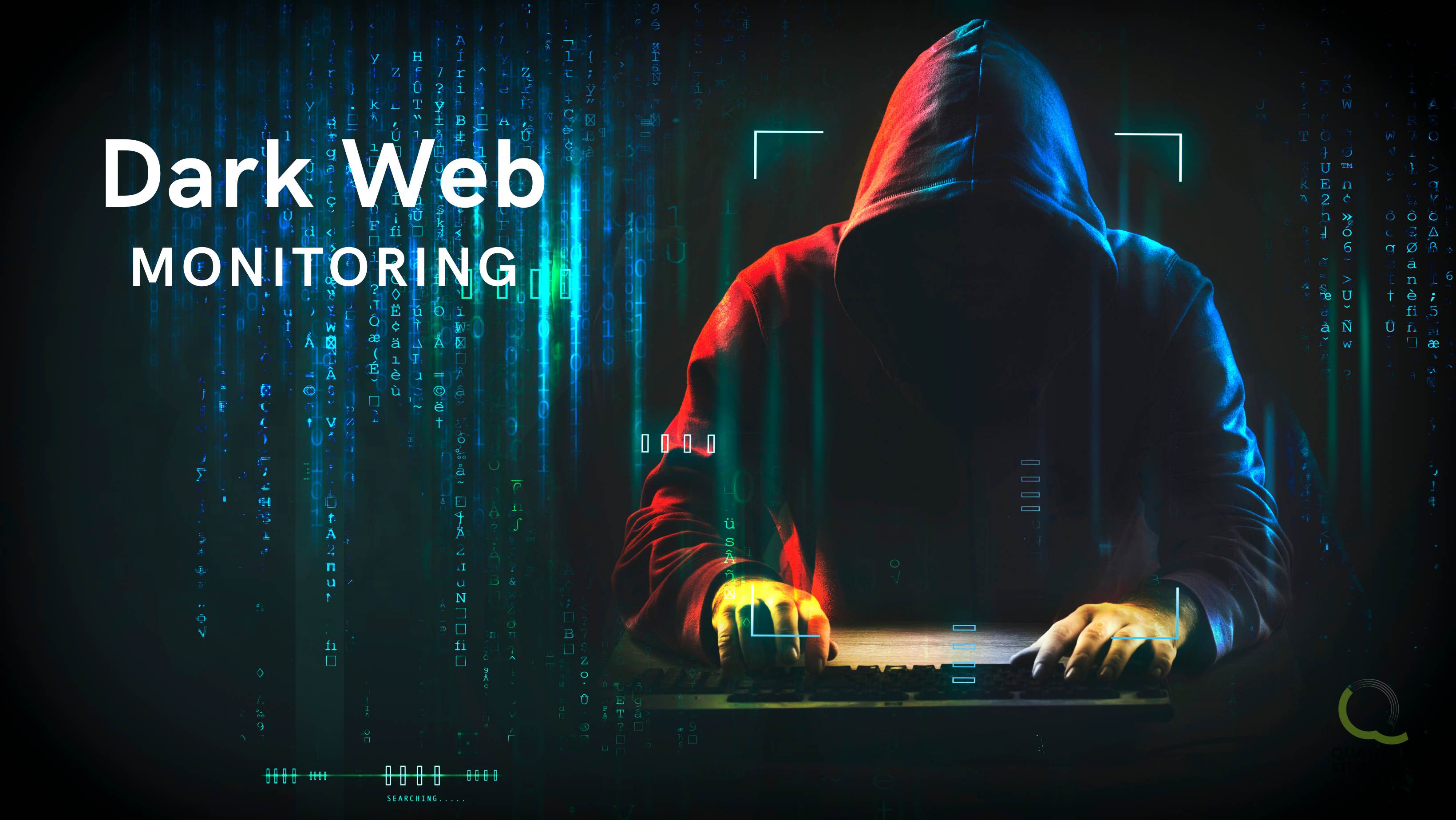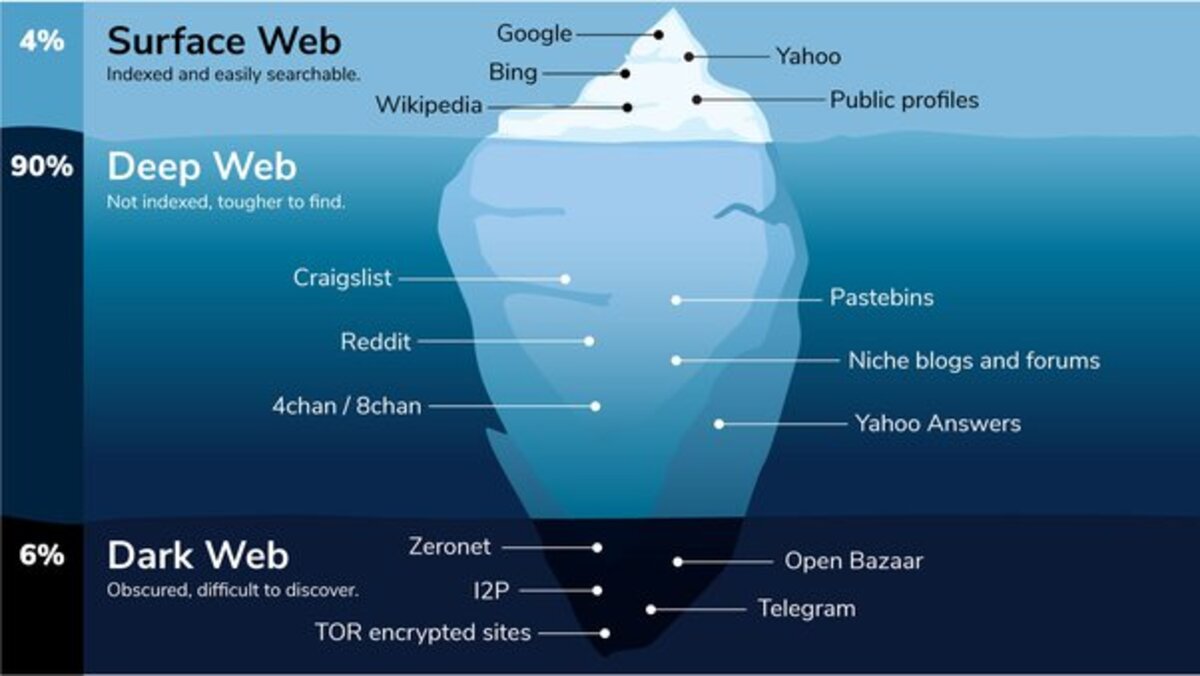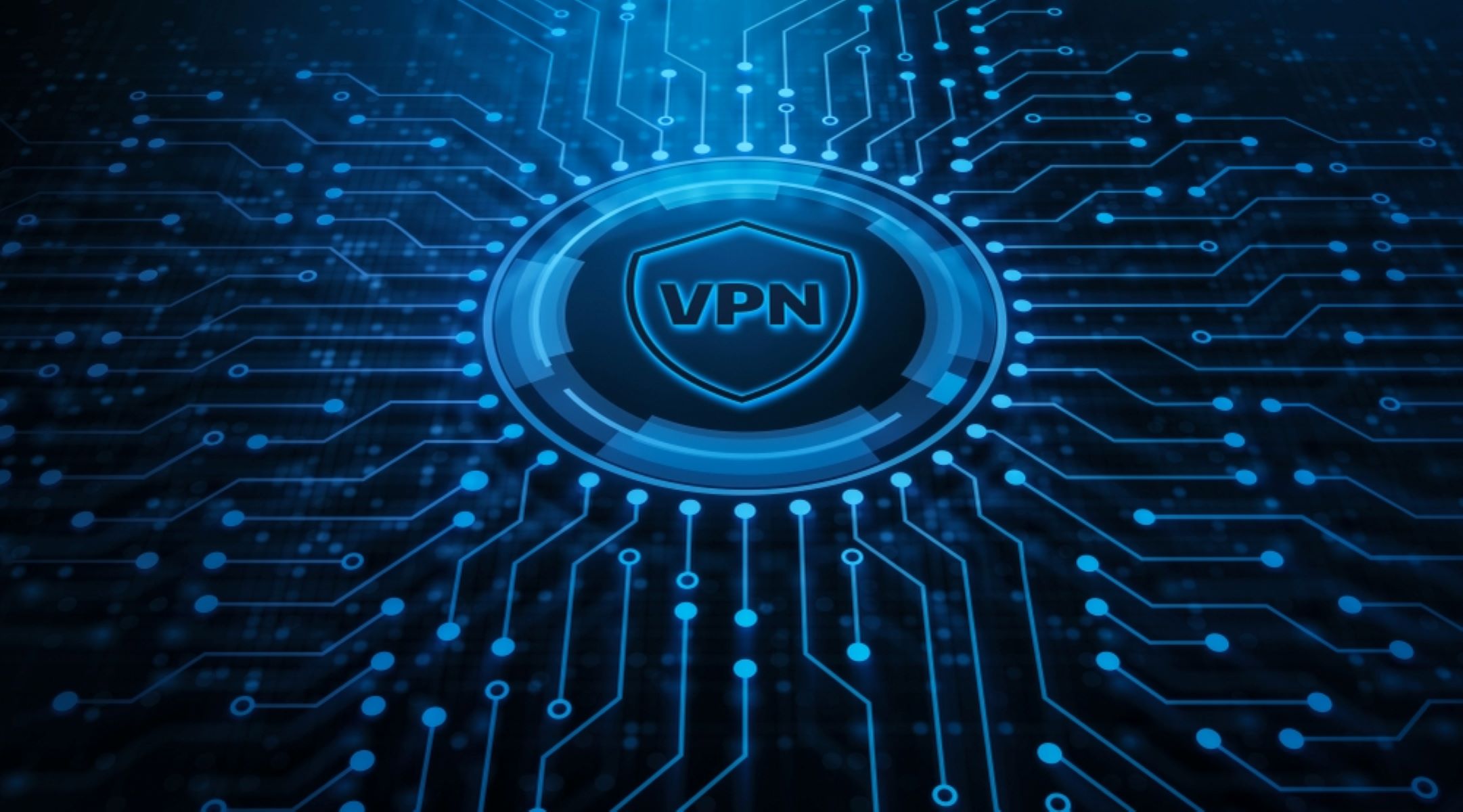Introduction
The internet is a vast and ever-expanding network of information, connecting billions of people worldwide. However, beneath the surface lies a hidden realm known as the Dark Web. This mysterious part of the internet is often associated with illicit activities, illegal trade, and anonymity. But what exactly is the Dark Web, and how does it work?
The Dark Web refers to a collection of websites that cannot be accessed through traditional search engines like Google or Bing. Instead, it requires special software and configurations to navigate its depths. The content found on the Dark Web is often encrypted and hosted on anonymous servers, making it difficult to trace back to its origin.
Unlike the surface web, which includes publicly accessible websites, the Dark Web exists within a hidden network. It primarily operates on a network called Tor (The Onion Router), which is designed to protect users’ privacy and provide anonymity online. With Tor, users can access websites, forums, and services without revealing their identity or location.
While the Dark Web has gained a notorious reputation for hosting illegal activities, it is important to note that it also serves as a platform for freedom of speech and a refuge for individuals living in oppressive regimes. To truly understand the Dark Web, we must explore how it works and the technology that powers it.
What is the Dark Web?
The Dark Web is a part of the internet that is not indexed by search engines and requires special software to access. It is often confused with the Deep Web, which refers to websites that are not publicly accessible. However, the Dark Web specifically refers to websites that exist within a hidden network and utilize encryption and anonymity tools to keep users’ identities and activities concealed.
One of the key characteristics of the Dark Web is its emphasis on privacy and anonymity. This is achieved through technologies like the Tor network, which stands for The Onion Router. Tor is a decentralized network that bounces a user’s internet traffic through a series of relays, making it difficult for anyone to trace the origin of the data.
On the Dark Web, users can find a wide range of content, both legal and illegal. While it is often associated with illicit activities such as drug trade, weapons sales, and hacking forums, it is important to note that not all activities on the Dark Web are illegal. In fact, it also serves as a platform for whistleblowers, journalists, and activists to communicate and share information without fear of surveillance or censorship.
Another distinguishing feature of the Dark Web is the use of cryptocurrency, primarily Bitcoin, for transactions. This digital currency allows for anonymous and untraceable transactions, making it the preferred method of payment on the Dark Web. This anonymity extends to both buyers and sellers, creating an ecosystem that is difficult for law enforcement agencies to infiltrate.
While the Dark Web may seem like a realm of lawlessness and secrecy, it is important to remember that it is just a small fraction of the entire internet. The vast majority of online activity occurs on the surface web, where mainstream websites and services are accessible to all. However, understanding the Dark Web and its workings is crucial for organizations and individuals to protect themselves from potential cyber threats.
How does the Dark Web work?
The Dark Web operates using a combination of specialized technologies and protocols that enable users to access websites, communicate, and conduct transactions anonymously. Two key components that facilitate the functioning of the Dark Web are the Tor network and onion routing.
The Tor network, short for The Onion Router, is a decentralized network that anonymizes internet traffic by bouncing it through a series of relays. When a user connects to the Tor network, their traffic is encrypted and routed through multiple relays, making it difficult for anyone to trace the origin of the data.
This process of bouncing the traffic through multiple relays is known as onion routing. Each relay in the Tor network only knows the previous and next hops in the data transfer, creating layers of encryption like the layers of an onion. Ultimately, the data reaches its destination without revealing the user’s IP address or identity.
To access the Dark Web, users need to download and configure the Tor browser, which is specifically designed to connect to the Tor network. The Tor browser acts as a gateway to the Dark Web, allowing users to visit websites with .onion domains that are not accessible through traditional browsers.
Unlike regular websites with easily memorable domain names, .onion domains are made up of a string of random characters, adding an additional layer of anonymity. These domains are automatically generated based on the server’s public key, ensuring that the website can only be accessed through the Tor network.
Once connected to the Tor network, users can browse the Dark Web, access hidden forums, participate in encrypted communications, and make anonymous transactions using cryptocurrencies like Bitcoin. The Tor network provides a level of privacy and anonymity that is highly sought after by individuals looking to protect their identity or engage in activities away from surveillance.
It’s important to note that while the Tor network provides anonymity, it does not guarantee complete security. Users still need to exercise caution when interacting with websites or individuals on the Dark Web, as there are risks associated with malware, scams, and law enforcement infiltration.
In the next sections, we will explore the access points to the Dark Web and the various privacy and anonymity measures employed by users and the websites themselves.
Tor Network
The Tor network, short for The Onion Router, is the backbone of the Dark Web. It is a decentralized network that enables anonymous communication and protects users’ privacy by obscuring their online activities and identity.
Developed by the United States Naval Research Laboratory in the 1990s, the Tor network was initially designed to protect government communications by routing them through multiple relays before reaching their destination. Today, the Tor network is widely used by individuals, activists, journalists, and organizations seeking online privacy and anonymity.
The Tor network consists of thousands of volunteer-operated servers known as relays. These relays collectively create a network that allows users to access the internet anonymously. When a user connects to the Tor network, their internet traffic is encrypted and routed through a series of randomly selected relays before finally reaching its destination.
This process of routing internet traffic through multiple relays is known as onion routing. Each relay only knows the IP address of the previous hop and the next hop in the data transfer, making it challenging to trace back the origin of the traffic. The layers of encryption applied at each relay resemble the layers of an onion, hence the name “onion routing.”
One of the key aspects of the Tor network is that it is designed to defend against traffic analysis, a technique used to monitor internet communications and deduce information about the sender or recipient. By bouncing internet traffic through multiple relays, Tor makes it difficult for anyone analyzing the network to determine the source and destination of the data.
It is important to note that while the Tor network provides a significant level of anonymity, it is not foolproof. Law enforcement agencies, intelligence organizations, and other skilled adversaries can employ various techniques to de-anonymize users or identify their activities on the network. Additionally, vulnerabilities in the Tor software or misconfigured settings can potentially compromise a user’s anonymity.
Despite these risks, the Tor network remains one of the most widely used tools for achieving privacy and anonymity online. It has become an essential resource for individuals seeking to bypass censorship, protect their identity, or access websites and services on the Dark Web.
In the next section, we will discuss the concept of onion routing in more detail and explore how it contributes to the overall anonymity provided by the Tor network.
Onion Routing
Onion routing is a crucial component of the Tor network, enabling anonymous communication and protecting the privacy of users on the Dark Web. The concept of onion routing involves encrypting data multiple times and routing it through several relays, creating layers of encryption that resemble the layers of an onion.
When a user sends a request or data packet through the Tor network, it undergoes a series of encryption and decryption steps at each relay. Each relay only decrypts a layer of encryption to reveal the address of the next relay, effectively hiding the original source of the data. This multiple-layer encryption ensures that no single relay knows the complete path of the communication.
Let’s take a look at the steps involved in onion routing:
- Encryption: When a user initiates a connection to a website or service on the Dark Web, their data is encrypted with multiple layers of encryption. Each layer is encrypted with the public key of the next relay in the Tor circuit.
- Routing: The encrypted data packet is then sent to the first relay in the circuit, known as the entry node. The entry node only has knowledge of the user’s IP address, but not the data itself.
- Relaying: The entry node decrypts the first layer of encryption to reveal the address of the next relay, also known as the middle node. The entry node then forwards the partially decrypted data packet to the middle node, which also decrypts a layer of encryption. This process continues until the data reaches the exit node.
- Decryption: The exit node, which is the final relay in the circuit, decrypts the last layer of encryption to reveal the actual destination of the data packet.
- Response: The exit node sends the request to the destination server on the Dark Web, and the response is relayed back through the circuit in reverse order, with each relay adding another layer of encryption.
- Delivery: Finally, the response reaches the user’s Tor client, where it is decrypted at each relay to reveal the original data.
This multi-layered encryption and routing process ensures that each relay only has knowledge of the previous and next relays in the circuit, making it incredibly challenging to trace the origin or destination of the communication.
Onion routing not only protects the identity and privacy of users on the Tor network but also helps to defend against traffic analysis. By bouncing the data through multiple relays, it becomes difficult for adversaries to monitor or analyze internet communications and determine the source or content of the data.
Understanding the concept of onion routing is crucial for anyone using the Tor network or accessing the Dark Web. It highlights the mechanisms in place to ensure privacy and anonymity and underscores the importance of encryption and secure communication protocols in today’s digital landscape.
Accessing the Dark Web
Accessing the Dark Web is not as simple as typing a URL into a search engine. It requires the use of specialized software and configurations to navigate this encrypted and anonymous part of the internet.
The most common method for accessing the Dark Web is through the Tor network. To get started, users need to download and install the Tor browser, which is specifically designed to connect to the Tor network. The Tor browser is available for Windows, Mac, Linux, and mobile devices, making it accessible to a wide range of users.
Once the Tor browser is installed, users can launch the application and connect to the Tor network. The browser will automatically configure the necessary settings to connect securely to the network and provide access to the Dark Web.
With the Tor browser connected, users can now explore the Dark Web by entering “.onion” URLs into the browser’s address bar. These URLs are unique to websites hosted on the Tor network and cannot be accessed through traditional browsers.
It is important to note that the Dark Web operates independently from the regular surface web, so users cannot access mainstream websites or services through the Tor browser. The Dark Web is a separate entity with its own set of websites, forums, marketplaces, and communication channels.
However, accessing the Dark Web is not without risks. While the Tor network provides a certain level of anonymity, it does not guarantee complete security. Users must still exercise caution and follow best practices to protect their privacy and identity.
Here are a few tips for safe browsing on the Dark Web:
- Use the latest version of the Tor browser: Ensure that you are using the most up-to-date version of the Tor browser to take advantage of the latest security features and fixes.
- Be cautious of malicious websites: Just like on the surface web, there are malicious websites on the Dark Web. Exercise caution when clicking on links, downloading files, or entering personal information.
- Consider using a VPN: At the very least, consider using a virtual private network (VPN) in conjunction with the Tor browser. A VPN adds an extra layer of encryption and can help further protect your online activities.
- Enable security features: The Tor browser offers various security features such as disabling JavaScript, blocking certain plugins, and clearing cookies. Enable these features to enhance your privacy and security.
- Use strong, unique passwords: When creating accounts or logging in to websites on the Dark Web, use strong, unique passwords to prevent unauthorized access.
By following these best practices and taking necessary precautions, users can navigate the Dark Web with a higher level of security and anonymity.
The Silk Road and Illegal Activities on the Dark Web
When discussing the Dark Web, one cannot ignore the notorious marketplace known as the Silk Road. The Silk Road was an online platform that gained widespread attention for facilitating the sale of illegal goods and services using cryptocurrencies.
Operated by Ross Ulbricht under the pseudonym “Dread Pirate Roberts,” the Silk Road was launched in 2011. It operated on the Dark Web and quickly became a hub for illegal activities, including the sale of drugs, counterfeit money, stolen credit card information, hacking tools, and weapons.
The Silk Road operated using the anonymity provided by the Tor network and utilized Bitcoin as the primary mode of payment. Bitcoin’s decentralized nature and pseudonymous transactions made it the ideal currency for conducting illicit activities on the Dark Web.
While the Silk Road was notorious for its role in facilitating illegal trade, it also demonstrated the vulnerabilities within the Dark Web’s anonymous marketplace. Law enforcement agencies eventually infiltrated the Silk Road, leading to the arrest and conviction of Ross Ulbricht in 2013.
Since the takedown of the Silk Road, various similar marketplaces have emerged on the Dark Web, each trying to fill the void left by its absence. These marketplaces operate under different names and employ advanced security measures to evade detection, making it challenging for law enforcement to shut them down.
Aside from illegal marketplaces, the Dark Web continues to host a myriad of illicit activities. These include underground forums where hackers share hacking techniques and stolen data, counterfeit document services, human trafficking, and even hitmen for hire. The anonymous and encrypted nature of the Dark Web makes it an attractive platform for individuals engaging in illegal activities.
It is essential to emphasize that the Dark Web is not inherently illegal, and there are legitimate uses for anonymity and privacy. Whistleblowers, journalists, activists, and individuals living in oppressive regimes often rely on the Dark Web to communicate and share information without fear of surveillance or censorship.
Nevertheless, it is crucial to acknowledge the darker side of the Dark Web, where illegal activities persist. Governments and law enforcement agencies around the world are constantly working to combat cybercrime and shut down illicit operations on the Dark Web. They employ various techniques, such as infiltration, blockchain analysis, and developing advanced tools to track down criminals operating in the shadows.
By maintaining a watchful eye and fostering collaboration among countries and agencies, there is hope for making the Dark Web a safer place and preventing the exploitation of its anonymity for nefarious activities.
Privacy and Anonymity on the Dark Web
One of the main attractions of the Dark Web is the promise of privacy and anonymity. The technology and tools utilized on the Dark Web aim to provide users with a level of confidentiality and protection from surveillance. However, it is important to understand the nuances and limitations of privacy and anonymity in this hidden part of the internet.
Privacy on the Dark Web is primarily achieved through the use of the Tor network. By routing internet traffic through multiple relays, the Tor network hides the user’s IP address and makes it challenging to trace their online activities. This helps protect users from being identified and targeted by cybercriminals or government surveillance.
Anonymity is another crucial aspect of the Dark Web. When users access websites on the Dark Web, their identities are concealed. Transactions on the Dark Web are often conducted using cryptocurrencies like Bitcoin, which add an additional layer of anonymity by obfuscating financial transactions.
However, it is important to note that while the Tor network and other encryption technologies can provide a significant level of privacy and anonymity, they are not foolproof. Users must still exercise caution to protect themselves from potential risks.
The following factors should be considered when striving for privacy and anonymity on the Dark Web:
- Opsec Practices: Users must implement strong operational security (Opsec) practices, such as avoiding sharing personal information, using pseudonyms, and separating online identities across different platforms.
- Secure Communications: Encrypted communication tools, like PGP (Pretty Good Privacy), allow for secure and private conversations on the Dark Web. Utilizing such tools can help protect sensitive information.
- Secure Wallets and Transactions: When conducting transactions on the Dark Web, it is important to use secure wallets and take precautions to protect personal financial information.
- Beware of Social Engineering: Users must be aware of social engineering tactics employed by adversaries seeking to gain access to personal information or compromise anonymity. Vigilance and skepticism are key.
- Regular Software and Security Updates: Keeping the Tor browser and other security tools up to date helps ensure the latest bug fixes and security enhancements are in place.
It is worth noting that privacy and anonymity on the Dark Web are not absolute. Determined adversaries, such as skilled attackers or government agencies, may still find ways to de-anonymize users or track their activities. Law enforcement agencies have proven their ability to infiltrate and shut down illegal operations on the Dark Web, highlighting the challenges of maintaining complete anonymity in an evolving digital landscape.
While the Dark Web can provide a level of anonymity for users seeking privacy, it is important to weigh the potential risks and benefits associated with accessing this hidden part of the internet. Adhering to best practices, exercising caution, and understanding the limitations of privacy and anonymity are essential for a safer and more secure experience on the Dark Web.
Cybersecurity Risks on the Dark Web
While the Dark Web offers privacy and anonymity, it also poses significant cybersecurity risks. Users venturing into this hidden realm must be aware of the potential dangers and take precautions to protect themselves from various threats.
One of the most pervasive cybersecurity risks on the Dark Web is the prevalence of malicious actors. Cybercriminals, hackers, scammers, and other malicious entities actively operate on the Dark Web, looking for opportunities to exploit unsuspecting users.
Here are some of the key cybersecurity risks users should be mindful of when navigating the Dark Web:
- Malware and Exploits: Malicious websites and downloads on the Dark Web may contain malware designed to compromise users’ devices, steal sensitive information, or gain unauthorized access. Users must exercise caution when interacting with unfamiliar websites or downloading files.
- Financial Scams: Various scams exist on the Dark Web, such as fake marketplaces, counterfeit currency, and fraudulent services. Users may encounter scams disguised as legitimate vendors or services, leading to financial loss or identity theft.
- Law Enforcement Infiltration: While law enforcement agencies strive to combat cybercrime on the Dark Web, there is a risk of encountering undercover agents posing as buyers or sellers. Users engaging in illegal activities may unknowingly interact with law enforcement, leading to potential legal consequences.
- Social Engineering Attacks: Cybercriminals on the Dark Web may employ social engineering techniques to manipulate users and trick them into revealing sensitive information or performing actions that compromise their security. Users must be vigilant and skeptical of any requests for personal or financial information.
- Data Breaches and Leaks: The Dark Web is a source of stolen and leaked data. Cybercriminals may sell or exchange databases containing personal information, login credentials, or financial details. This puts individuals and organizations at risk of identity theft, fraud, and other forms of cyberattacks.
It is important to note that the anonymous nature of the Dark Web can make it challenging to verify the legitimacy or trustworthiness of individuals, websites, or services. Users must exercise caution, conduct thorough research, and rely on credible sources of information before engaging in any transactions or sharing sensitive data.
Additionally, users are advised to follow general cybersecurity best practices, even on the Dark Web. This includes having up-to-date antivirus software, using strong and unique passwords, regularly patching and updating software, and educating oneself about common security threats and how to mitigate them.
While there are inherent risks involved in exploring the Dark Web, understanding the cybersecurity landscape and taking appropriate precautions can significantly mitigate potential threats and enhance online safety.
Combating Cybercrime on the Dark Web
The Dark Web has long been associated with cybercrime and illegal activities, making it a priority for governments, law enforcement agencies, and cybersecurity organizations to combat cyber threats on this hidden part of the internet. Efforts to tackle cybercrime on the Dark Web require a multi-faceted approach combining technological advancements, global collaboration, and proactive law enforcement strategies.
Here are some key methods and initiatives aimed at combating cybercrime on the Dark Web:
- Law Enforcement Operations: Law enforcement agencies around the world actively conduct operations to infiltrate and dismantle criminal organizations operating on the Dark Web. These operations involve undercover investigations, monitoring illegal marketplaces, and gathering evidence to prosecute offenders.
- Coordinated Global Efforts: Collaboration between international law enforcement agencies, such as Interpol and Europol, helps facilitate information sharing, joint operations, and the exchange of best practices for combating cybercrime on the Dark Web. Such global cooperation is crucial given the borderless nature of cyberspace.
- Technological Advancements: Researchers, cybersecurity experts, and software developers continually work on developing tools and techniques to enhance Dark Web monitoring, identify malicious actors, and detect illegal activities. These advancements aim to stay one step ahead of cybercriminals and assist law enforcement in combating cyber threats.
- Blockchain Analysis: Cryptocurrencies like Bitcoin, often used for anonymous transactions on the Dark Web, can be traced through blockchain analysis. Law enforcement agencies utilize specialized tools that analyze blockchain transactions, helping to identify patterns, track funds, and de-anonymize illicit cryptocurrency activities.
- Public-Private Partnerships: Collaboration between government agencies, private organizations, and cybersecurity companies plays a crucial role in combating cybercrime on the Dark Web. Public-Private Partnerships enable the sharing of threat intelligence, joint research efforts, and coordinated responses to cyber threats.
- Education and Awareness: Educating the public about the risks and potential consequences of engaging in illegal activities on the Dark Web is essential. Raising awareness about cybersecurity best practices, safe browsing habits, and the legal ramifications of participating in cybercrime helps deter potential offenders.
It is important to note that combating cybercrime on the Dark Web is an ongoing battle. As law enforcement agencies develop new techniques, cybercriminals also adapt their strategies to evade detection. Thus, regular updates to cybersecurity policies, legislation, and enforcement practices are necessary to keep pace with the ever-evolving landscape of cybercrime.
While significant progress has been made in combating cybercrime on the Dark Web, it is a complex and persistent challenge. Continued collaboration, innovative approaches, and a collective commitment to combating cyber threats are vital to create a safer digital environment for individuals and organizations alike.
Conclusion
The Dark Web is a fascinating and enigmatic part of the internet that offers both opportunities and risks. It provides individuals with privacy, anonymity, and freedom of speech, but it also harbors illegal activities and cybersecurity threats.
Understanding the Dark Web and how it operates is crucial for individuals, organizations, and law enforcement agencies aiming to navigate its complexities and mitigate potential risks. The Tor network and onion routing form the backbone of the Dark Web infrastructure, enabling users to access hidden websites and communicate anonymously.
While the Dark Web is often associated with illegal activities, it is important to recognize that it also serves as a refuge for individuals seeking protection from surveillance, censorship, and oppression. Whistleblowers, journalists, and activists depend on the Dark Web to expose corruption, share information, and fight for justice.
However, it is essential to approach the Dark Web with caution. Cybersecurity risks, including malware, scams, and law enforcement infiltration, are prevalent. Users must prioritize their online security by practicing good Opsec, using secure communication tools, and being aware of potential social engineering attacks.
Law enforcement agencies, governments, and cybersecurity organizations continue to work diligently to combat cybercrime on the Dark Web. Coordinated global efforts, technological advancements, and public-private partnerships are cornerstones in the fight against malicious actors who exploit the Dark Web for illegal purposes.
As the landscape of cyberspace evolves, it is crucial for individuals to stay informed, exercise vigilance, and follow best practices to navigate the Dark Web safely. By understanding the risks and taking necessary precautions, we can help create a more secure digital environment while embracing the potential benefits that the Dark Web offers.







